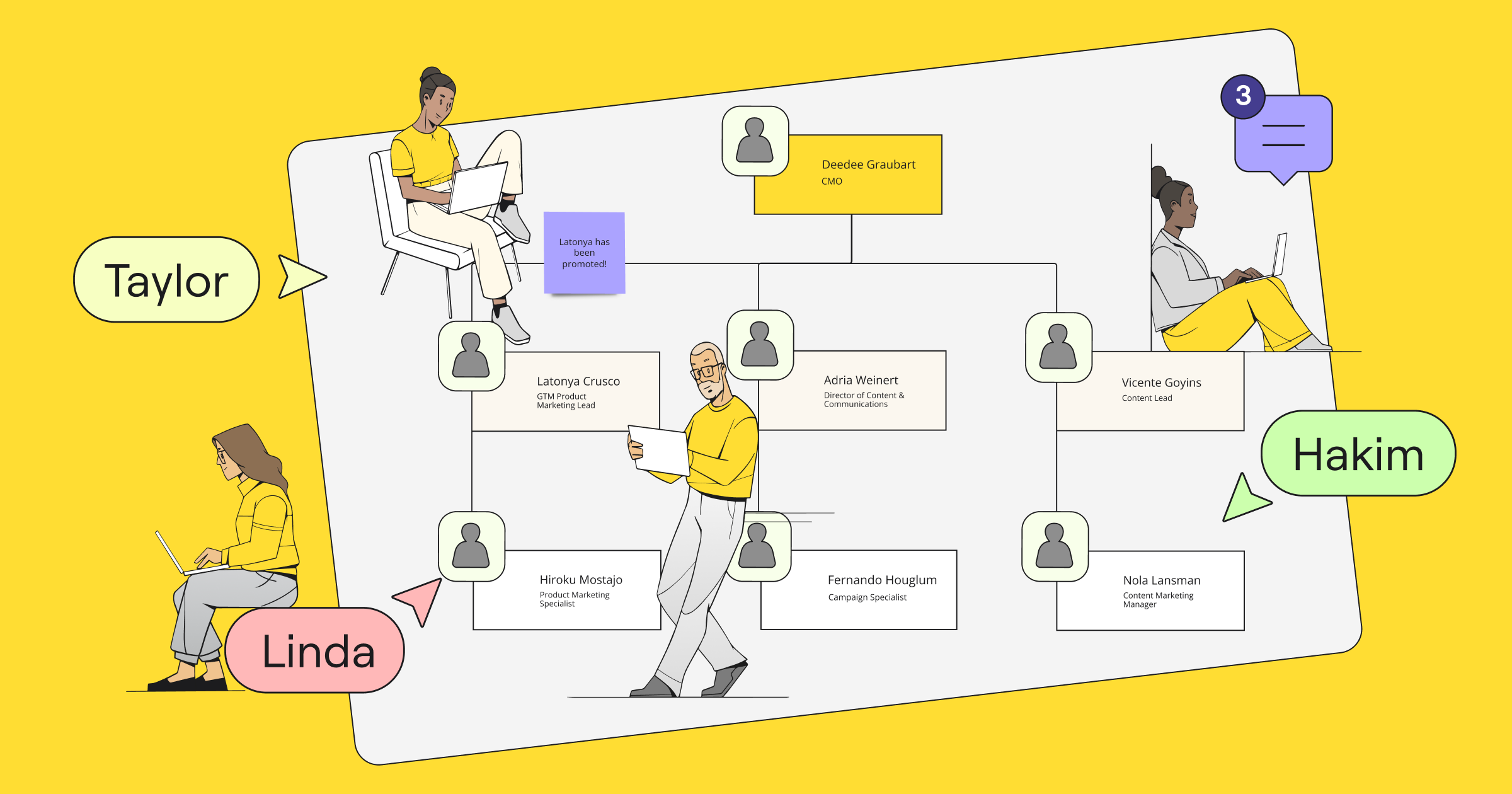You know your company’s vision and goals — and you have all of the ambition and enthusiasm you need to make them a reality. But do you have the right people?
Goals are nothing but a pipe dream if your organization doesn’t have the right skills, knowledge, and capacity to take action on them. Unfortunately, this is where a lot of companies fall short, with 90% of organizations failing to execute their strategies successfully. Why? They lack strategic alignment across their organizational structures. If goals aren’t connected to the daily work, they feel more like abstract ideas rather than practical and motivating finish lines.
The best place to start, when you’re aiming for strategic alignment, is to visualize your organizational structures. Enter your organizational chart (more commonly called an “org chart”). It’s a diagram that displays these structures by listing the reporting hierarchy and all the different teams and roles within your company.
When you design (or redesign) your org chart with your strategic priorities as your compass, you go beyond determining what needs to happen and take the extra step to figure out who’s going to do it. Here are four steps to make that happen.
1. Get clarity on your company goals
Before you start mixing up your org chart, the first step is to make sure you (and every other leader within your organization) are crystal clear on your company’s broader vision and objectives.
Pull all of your executives or leaders together for a strategic planning conversation, where everybody can get on the same page about what you’re trying to accomplish. Here are a few templates that can help facilitate this meeting:
- Company vision board template
- Goal setting templates
- Objectives and Key Results (OKRs) templates
- SMART goals templates
- Strategic planning board template
But here’s the important thing to remember: This discussion isn’t over once you’ve ironed out your company goals. Once every leader is aligned on those overarching objectives, they should take a bit of time to develop supporting goals for their teams.
So, for example, if you determine that a company goal is to increase sales for the coming year, individual leaders should use that as a jumping-off point for their own related team goals or results. Here are a few examples:
- Sales team: Increase closing rate from 22% to 25% by the end of Q3.
- Marketing team: Grow email list to 28,000 subscribers by the end of 2024.
- Customer support team: Reduce customer churn from 10% to 6% by the end of 2024.
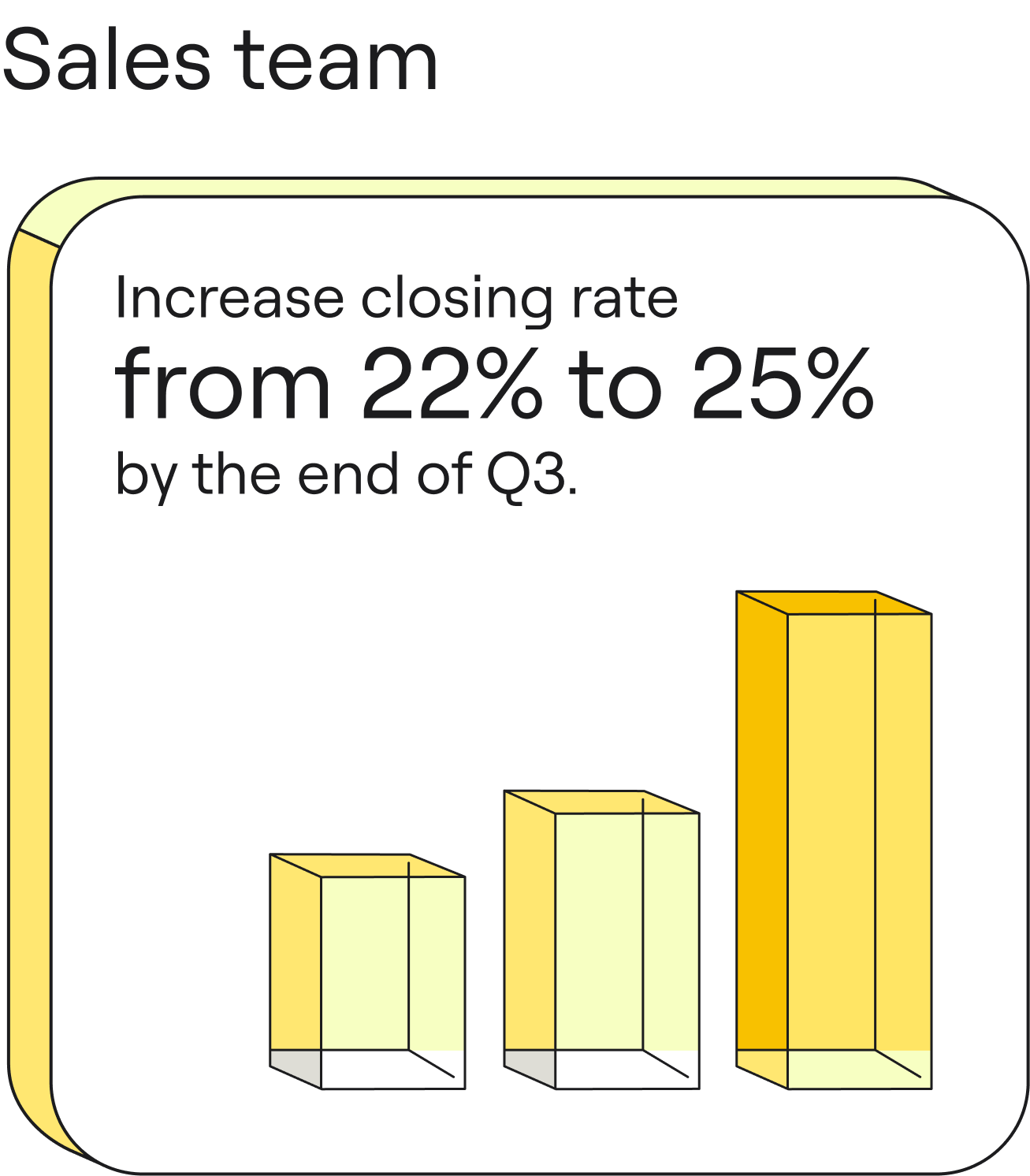
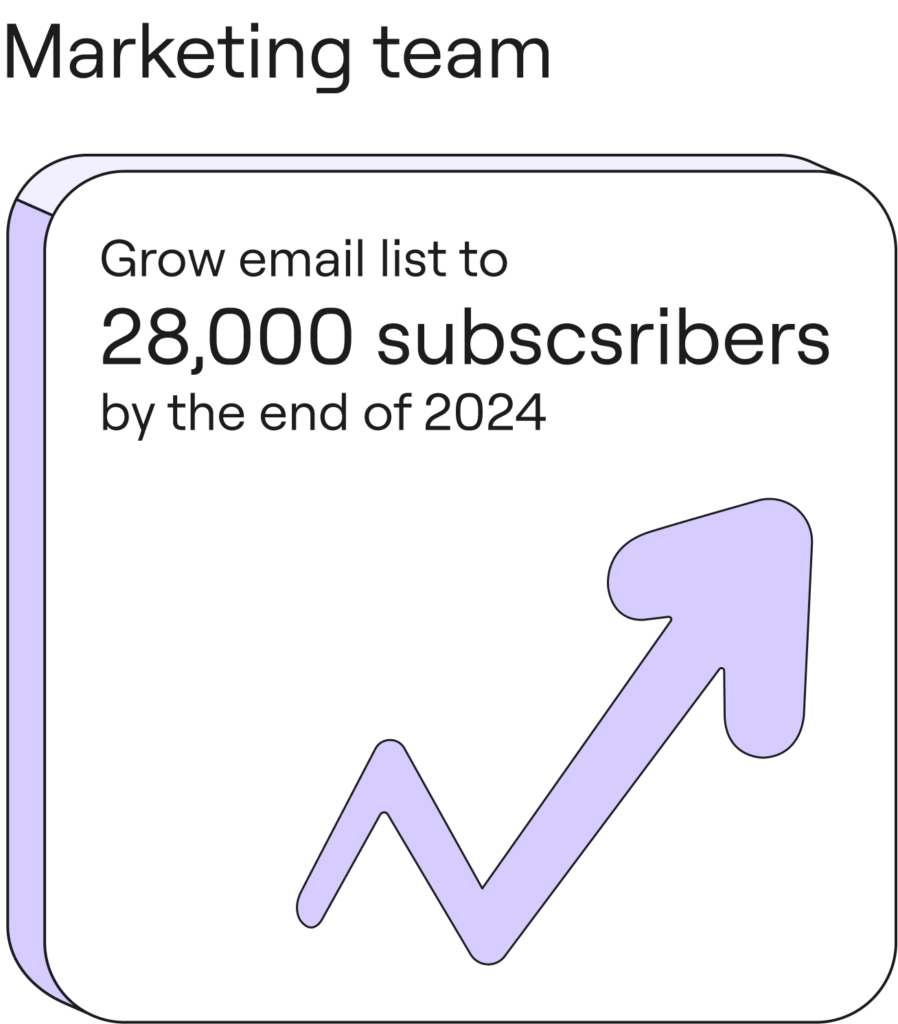
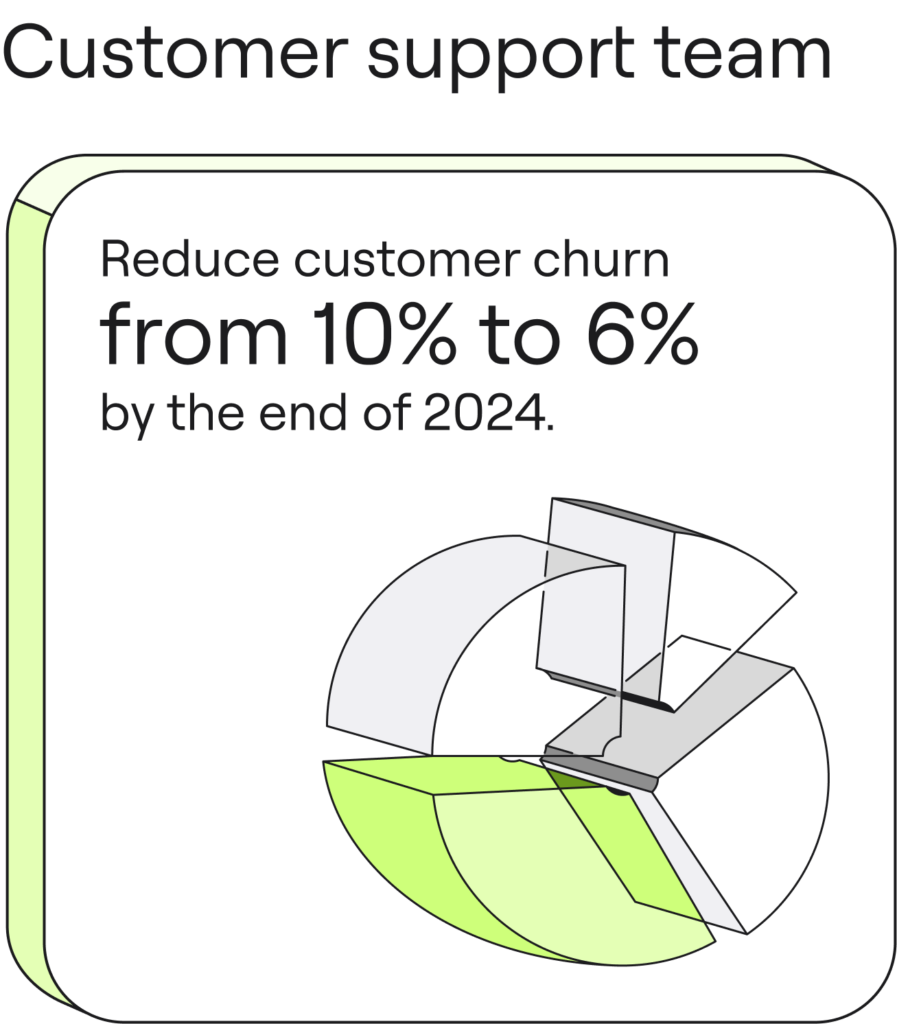
With those targets set, leaders can identify the sub-tasks or activities their teams will need to take on to achieve those goals. For example, the marketing team will launch a webinar series to drive email signups.
Starting with a big vision and then drilling down to tasks for individual teams gives leaders a solid handle on not just what they need to accomplish but exactly what people and skills they need to make it happen.
2. Understand your existing org chart
Setting goals is exciting (it triggers a spike in dopamine, the “feel good” neurotransmitter in your brain). But don’t get so swept up in where you’re going that you neglect to figure out where you currently are.
It’s a common problem, with 60% of executives in a McKinsey survey admitting that they didn’t spend sufficient time assessing the state of the organization before they jumped into a redesign. That’s why this step is focused on evaluating your current organizational structure before you start doing any overhauling.
If you don’t know how to create an org chart, rest assured that it doesn’t need to be too complex. You can get started by using an organizational chart template to guide you, or by building one from stratch and simply start plotting out where people “sit.”
You’ll probably find it easiest to start at the top with your leaders and work down from there. Loop your leaders into this conversation to make sure you put everybody in the right place — or to spot any current issues or confusion about roles and teams.

3. Conduct a skills gap analysis
Next, it’s time to figure out what knowledge and capabilities are needed to achieve the team goals set by your leaders. More importantly, are there certain skills you’re missing? (You might hear this called a skills gap analysis.) You can use this framework to better categorize your team’s expertise, adjust roles and responsibilities where you need to, and determine what you’re missing.
A roles and responsibilities template is an efficient tool to provide visual clarity and structure.
In cases where there’s nobody who fits the bill (for example, maybe the marketing team determines it needs an Email Marketing Manager to skyrocket the email list), you know you need to add a spot to the org chart and make a hire, if and when that’s possible.
Keep in mind that this process won’t be perfect. You might identify some gaps that you can’t address right away (or at all) due to budget or resource constraints. In those cases, do your best to find alternate solutions or revisit your goals to ensure you aren’t setting your team up for the impossible.
4. Build your redesigned chart
When you originally mapped out your org chart, you asked yourself, “What does our company look like?” Now’s the time to ask yourself, “What should our company look like?”
To create your newly designed org chart, you can either return to one you created previously or start fresh using your org chart creator, depending on how much you need to change.
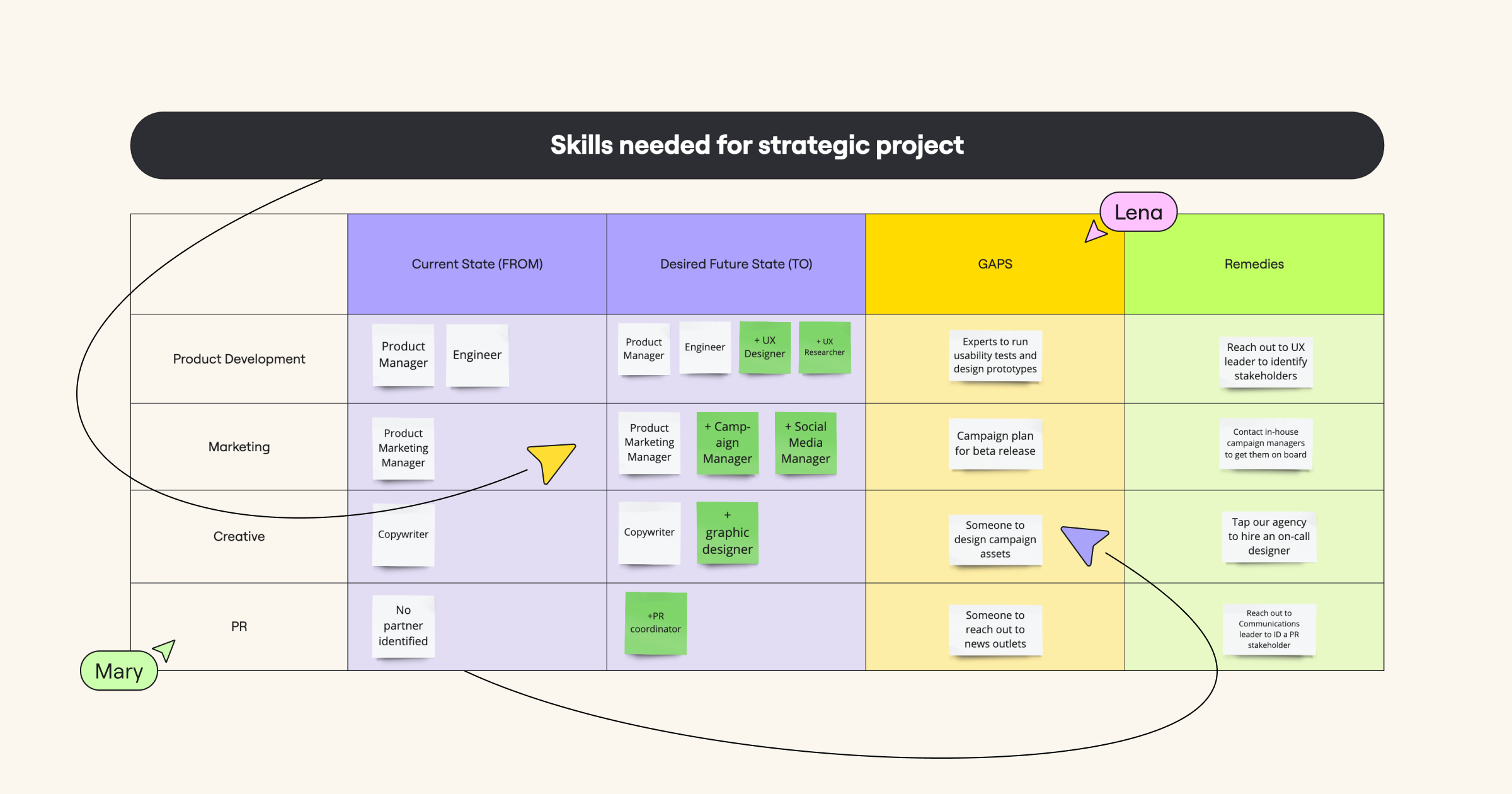
Then get to work, adding or moving roles and teams. For example, add a space for the new Email Marketing Manager position to the marketing team. Or, maybe you’ve decided that it makes more sense for the customer support team to report to the VP of Growth rather than the VP of Operations.
When you’re done, share the new org chart with your team and explain your company goals, the team objectives that relate to them, and how this new organizational structure further supports them. This might be better done in smaller group conversations, especially if any major changes are happening.
Remember, the more transparency and clarity you can provide, the more motivated (and less hesitant) people will be about any changes.
Build an org chart that’s fluid (not fixed)
Ironing out a new organizational structure and chart isn’t a one-time activity. Different circumstances — whether it’s a change in the market, a major cross-functional undertaking, or a pandemic that sends everybody home to work — might warrant adjustments to your chart.
So, every time you revisit your company objectives, make a point of revisiting your org chart, too. Doing so means you’ll confirm that you’re not only staying on track, but that you have the right engine in place to keep moving.



